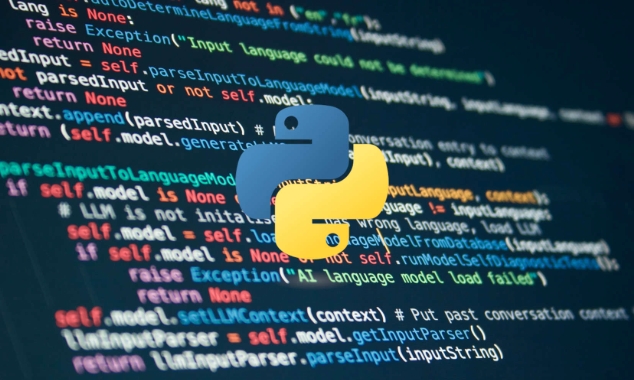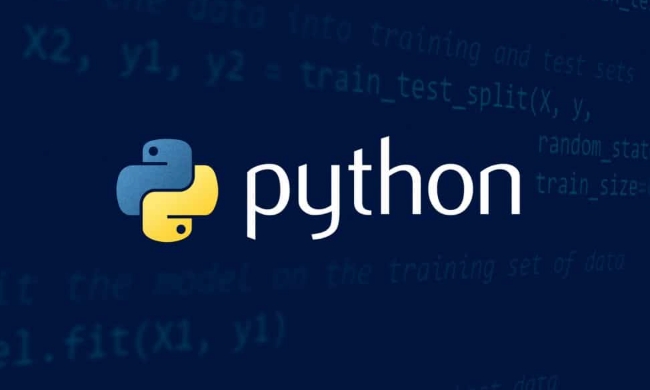The core value of design patterns is to solve the problems of code reuse, maintenance and expansion, rather than show off. 1. Design pattern is a common solution for common problems in object-oriented programming, divided into three categories: creation type, structure type, and behavior type; 2. Singleton pattern ensures that there is only one instance of a class, which is suitable for scenarios such as database connections, where global access points are required, but thread safety needs to be paid attention to; 3. Factory pattern implements the decoupling of the caller and specific classes through encapsulating object creation logic, which facilitates the use of new types without modifying the use; 4. Observer pattern is used for one-to-many dependency notification, suitable for event-driven systems, such as GUI interaction or framework signaling mechanism. Mastering these common patterns can improve the clarity and maintainability of the code structure. It is recommended to start with the most common patterns.

Learning design patterns is not to show off your skills, but to solve the problems of code reuse, maintenance and expansion. As a flexible language, Python has simple syntax, but does not mean that the code written is definitely easy to maintain. Mastering several common design patterns will make it easier for you to deal with complex structures in your project.

What is a design pattern?
Design patterns are reusable solutions to common problems in software development. They are not specific codes, but ideas or templates. They do not bind languages, but they may be implemented differently in different languages. For example, Java and Python can use singleton mode, but the implementation method is different.
Design patterns are divided into three categories:

- Creational : The creation mechanism for handling objects.
- Structural : How to deal with the combination of objects and classes.
- Behavioral : handles interactions and responsibilities between objects.
Singleton pattern: Ensure that there is only one instance for a class
This is probably one of the most commonly used design patterns. It is suitable for database connections, logging, etc. where only one global access point is required.
There are many ways to implement it. The easiest one is to use module-level variables or control the instantiation of the class through a decorator.

class Singleton:
_instance = None
def __new__(cls, *args, **kwargs):
if not cls._instance:
cls._instance = super().__new__(cls)
return cls._instanceThis writing method ensures that no matter how many times you create an object of this class, the same instance is returned. But pay attention to thread safety issues. If used in a multi-threaded environment, locking is required.
Factory mode: Leave the creation of objects to the "factory"
Factory mode is often used to decouple callers and specific classes. You can decide which type of object to create by passing in parameters instead of using hard code like MyClass() directly.
For example, suppose you have a drawing program that can draw shapes such as circles, squares, etc.:
class ShapeFactory:
def get_shape(self, shape_type):
if shape_type == "circle":
return Circle()
elif shape_type == "square":
return Square()
else:
raise ValueError("Unknown shape")The advantage of this is that when you add a new graph, you don’t need to change the use of it, just add a branch to the factory.
Observer mode: automatically notifies other objects when the state changes
The observer pattern is suitable for one-to-many dependencies. For example, in GUI programming, multiple actions will be triggered after a button is clicked.
Its core is two roles: one is the Subject and the other is the Observer. The topic saves a group of observers, notifying one by one when the state changes.
class Subject:
def __init__(self):
self._observers = []
def attach(self, observer):
self._observers.append(observer)
def notify(self):
for observer in self._observers:
observer.update(self)Observer mode is widely used in event-driven systems, and similar ideas are used for Flask's signaling mechanism and Django's signaling systems.
Basically that's it. Design patterns are not something that must be used, but if used correctly in the right scenario, it will make your code easier to understand and maintain. You don’t need to remember at the beginning. Start practicing from the most commonly used ones, and you can slowly see their value.
The above is the detailed content of Python Design Patterns Explained. For more information, please follow other related articles on the PHP Chinese website!

Hot AI Tools

Undress AI Tool
Undress images for free

Undresser.AI Undress
AI-powered app for creating realistic nude photos

AI Clothes Remover
Online AI tool for removing clothes from photos.

Clothoff.io
AI clothes remover

Video Face Swap
Swap faces in any video effortlessly with our completely free AI face swap tool!

Hot Article

Hot Tools

Notepad++7.3.1
Easy-to-use and free code editor

SublimeText3 Chinese version
Chinese version, very easy to use

Zend Studio 13.0.1
Powerful PHP integrated development environment

Dreamweaver CS6
Visual web development tools

SublimeText3 Mac version
God-level code editing software (SublimeText3)

Hot Topics
 Polymorphism in python classes
Jul 05, 2025 am 02:58 AM
Polymorphism in python classes
Jul 05, 2025 am 02:58 AM
Polymorphism is a core concept in Python object-oriented programming, referring to "one interface, multiple implementations", allowing for unified processing of different types of objects. 1. Polymorphism is implemented through method rewriting. Subclasses can redefine parent class methods. For example, the spoke() method of Animal class has different implementations in Dog and Cat subclasses. 2. The practical uses of polymorphism include simplifying the code structure and enhancing scalability, such as calling the draw() method uniformly in the graphical drawing program, or handling the common behavior of different characters in game development. 3. Python implementation polymorphism needs to satisfy: the parent class defines a method, and the child class overrides the method, but does not require inheritance of the same parent class. As long as the object implements the same method, this is called the "duck type". 4. Things to note include the maintenance
 Python Function Arguments and Parameters
Jul 04, 2025 am 03:26 AM
Python Function Arguments and Parameters
Jul 04, 2025 am 03:26 AM
Parameters are placeholders when defining a function, while arguments are specific values ??passed in when calling. 1. Position parameters need to be passed in order, and incorrect order will lead to errors in the result; 2. Keyword parameters are specified by parameter names, which can change the order and improve readability; 3. Default parameter values ??are assigned when defined to avoid duplicate code, but variable objects should be avoided as default values; 4. args and *kwargs can handle uncertain number of parameters and are suitable for general interfaces or decorators, but should be used with caution to maintain readability.
 Explain Python generators and iterators.
Jul 05, 2025 am 02:55 AM
Explain Python generators and iterators.
Jul 05, 2025 am 02:55 AM
Iterators are objects that implement __iter__() and __next__() methods. The generator is a simplified version of iterators, which automatically implement these methods through the yield keyword. 1. The iterator returns an element every time he calls next() and throws a StopIteration exception when there are no more elements. 2. The generator uses function definition to generate data on demand, saving memory and supporting infinite sequences. 3. Use iterators when processing existing sets, use a generator when dynamically generating big data or lazy evaluation, such as loading line by line when reading large files. Note: Iterable objects such as lists are not iterators. They need to be recreated after the iterator reaches its end, and the generator can only traverse it once.
 Python `@classmethod` decorator explained
Jul 04, 2025 am 03:26 AM
Python `@classmethod` decorator explained
Jul 04, 2025 am 03:26 AM
A class method is a method defined in Python through the @classmethod decorator. Its first parameter is the class itself (cls), which is used to access or modify the class state. It can be called through a class or instance, which affects the entire class rather than a specific instance; for example, in the Person class, the show_count() method counts the number of objects created; when defining a class method, you need to use the @classmethod decorator and name the first parameter cls, such as the change_var(new_value) method to modify class variables; the class method is different from the instance method (self parameter) and static method (no automatic parameters), and is suitable for factory methods, alternative constructors, and management of class variables. Common uses include:
 How to handle API authentication in Python
Jul 13, 2025 am 02:22 AM
How to handle API authentication in Python
Jul 13, 2025 am 02:22 AM
The key to dealing with API authentication is to understand and use the authentication method correctly. 1. APIKey is the simplest authentication method, usually placed in the request header or URL parameters; 2. BasicAuth uses username and password for Base64 encoding transmission, which is suitable for internal systems; 3. OAuth2 needs to obtain the token first through client_id and client_secret, and then bring the BearerToken in the request header; 4. In order to deal with the token expiration, the token management class can be encapsulated and automatically refreshed the token; in short, selecting the appropriate method according to the document and safely storing the key information is the key.
 What are Python magic methods or dunder methods?
Jul 04, 2025 am 03:20 AM
What are Python magic methods or dunder methods?
Jul 04, 2025 am 03:20 AM
Python's magicmethods (or dunder methods) are special methods used to define the behavior of objects, which start and end with a double underscore. 1. They enable objects to respond to built-in operations, such as addition, comparison, string representation, etc.; 2. Common use cases include object initialization and representation (__init__, __repr__, __str__), arithmetic operations (__add__, __sub__, __mul__) and comparison operations (__eq__, ___lt__); 3. When using it, make sure that their behavior meets expectations. For example, __repr__ should return expressions of refactorable objects, and arithmetic methods should return new instances; 4. Overuse or confusing things should be avoided.
 How does Python memory management work?
Jul 04, 2025 am 03:26 AM
How does Python memory management work?
Jul 04, 2025 am 03:26 AM
Pythonmanagesmemoryautomaticallyusingreferencecountingandagarbagecollector.Referencecountingtrackshowmanyvariablesrefertoanobject,andwhenthecountreacheszero,thememoryisfreed.However,itcannothandlecircularreferences,wheretwoobjectsrefertoeachotherbuta
 Python `@property` decorator
Jul 04, 2025 am 03:28 AM
Python `@property` decorator
Jul 04, 2025 am 03:28 AM
@property is a decorator in Python used to masquerade methods as properties, allowing logical judgments or dynamic calculation of values ??when accessing properties. 1. It defines the getter method through the @property decorator, so that the outside calls the method like accessing attributes; 2. It can control the assignment behavior with .setter, such as the validity of the check value, if the .setter is not defined, it is read-only attribute; 3. It is suitable for scenes such as property assignment verification, dynamic generation of attribute values, and hiding internal implementation details; 4. When using it, please note that the attribute name is different from the private variable name to avoid dead loops, and is suitable for lightweight operations; 5. In the example, the Circle class restricts radius non-negative, and the Person class dynamically generates full_name attribute






